Thomas Miller purchased Mintaro Lot 21 as well as the adjoining Lots 20 and 40 in February 1853 and … the choice of construction materials and general form of the house suggest it was built shortly after his land purchase. Inspection of the house indicates that there were at least two building stages and the original timber shingle roof was a lower hip and valley arrangement. The present pyramidal roof on the northern wing evolved when the house was re-roofed and the four ridges were continued to the present height.
This building at the top of the hill forms a major landmark in Mintaro and is of great significance. It typifies an early domestic building which changed and evolved through a number of years of alteration. The stone walling associated with the house and the slate paving to verandahs is also significant.[1]
‘Thomas Miller with his devoted wife Rebecca and one son arrived in Adelaide, SA, on the Fairlie on 7th July 1840.’[2] By 1853 they had moved to Mintaro and bought the property on which they built their house. A newspaper notice in 1956 suggests he owned four sections of land near Mintaro, in the hills to the west and northwest of the town.[3] This is confirmed in the Clare Council Rate Assessment book for 1866-67 where Thos. Miller snr., of Burra St, Mintaro is recorded as having rateable properties in sections 187, 337, 344, 329 and 330.
Thomas Miller and his wife were devout Wesleyan Methodists and were, among a number of early residents, instrumental in having the original chapel built in 1853 and the ‘mission house’ in 1858. As well as a trustee for the church Thomas was also a trustee for the Mintaro Institute Incorporated.
In 1873 Thomas acquired two new sections of land adjacent to his original holdings (on the left as you leave Mintaro for Sevenhill) and then in 1892, not quite ten years later, he sold most of his holdings to South Australia’s Chief Justice, Samuel James Way.
‘Thomas died on 26th November 1895 while visiting son Charles at Yongala, and was buried in the Yongala Cemetery. Rebecca remained in Yongala with her family, dying on 9th March 1907. They had eleven children, nine sons and two daughters, all surviving to adulthood.’[4]
The house and properties in Mintaro transferred to Rebecca in 1896. She then transferred them to widow Agnes Brinkworth (nee Nelson) who, a year later in 1897, married Walter Norris Rowe, blacksmith, son of William Matthews and Jane Rowe. Rebecca Miller died at age 88 on 9th March 1907.
The house has changed hands numerous times since then. Recent work undertaken includes repairs to the dry stone walling on Young Street and the sympathetic construction of a small studio facing Burra Street. Remains of an old cellar unearthed during construction were thoughtfully incorporated into the new studio.

